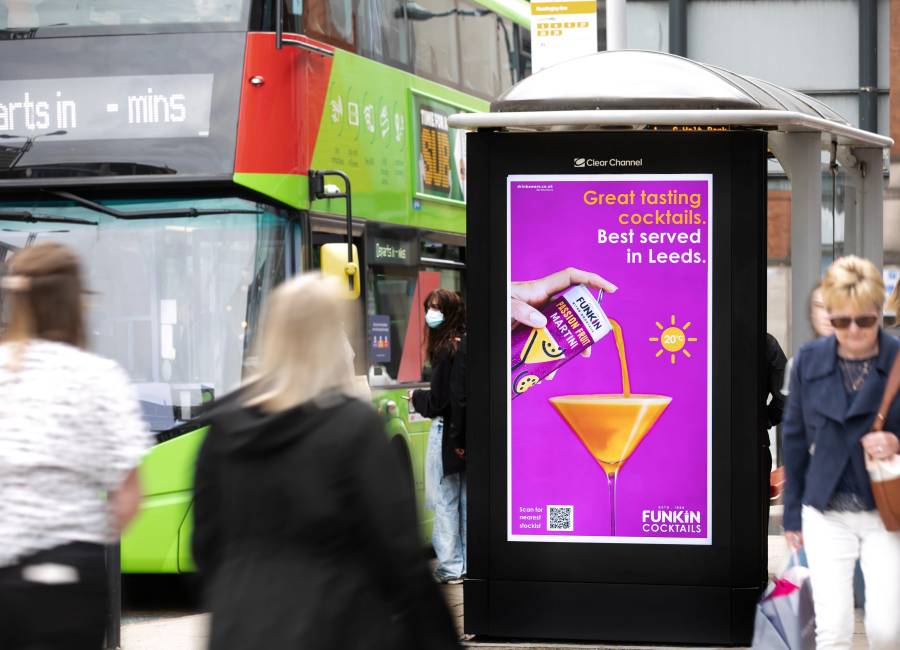Location is a major factor in the success of any Out of Home (OOH) advertising campaign, but the potential that location-based OOH advertising offers is still overlooked by lots of advertisers.
To help you avoid missing out on an opportunity, we’ve put together a complete guide to how location data can be used to steer OOH ad campaigns and achieve better results than ever.
What is location-based advertising?
Location based advertising is the use of location data to improve the contextual relevance of an advertising campaign. It’s a particularly valuable form of advertising personalisation, helping advertisers to better target specific audiences based on their location.
Location data can be used in diverse forms of advertising, from local search engine optimisation (SEO) to OOH. In all its forms, though, it offers the opportunity to create a stronger connection with the audience, which naturally leads to greater ad engagement.
This is especially the case in OOH campaigns, where the location of ads is intrinsically connected with the audience that will see them.

How using location data can transform OOH campaigns
The nature of OOH advertising means that location is a factor in every campaign, since advertisers have to choose where they want their ads to be displayed. But advertisers who are looking to take full advantage of the value location data offers can maximise the role it plays in their campaigns.
There are two main components to a location-based ad – the ad creative and the location it’s placed in. Both can be optimised to achieve the desired results.
The creative can be used to hook and directly address specific audiences, whether that’s based on addressing shared local values, incorporating iconic local landmarks or using local data.
The location that ads are placed in can be chosen to increase visibility by a certain audience segment, or to maximise the proximity to a real-world location where the audience can be activated.
By combining these two factors in unique ways, advertisers can generate hyper-relevant campaigns that are perfectly composed to address the specific audience they’re interested in.
Ways to implement location data in OOH ads
While all methods of location-based OOH advertising rely on the positive effects that pairing location-specific creative with location targeting has on audience engagement, there are differences in how they’re implemented.
The possibilities are practically unlimited, but these are three of the most common forms in OOH, along with location-based advertising examples.
Regionally relevant ads
Creating region-specific ads is one of the most basic methods of integrating location data into an OOH campaign, but it’s no less effective for its simplicity.
This method allows advertisers to tailor their campaign creative to a specific region, like a certain town or city, and deploy the ads in that region exclusively. As a result, they can connect more effectively with the local audience.
This regionally relevant campaign launched by NHS Blood and Transplant in partnership with Clear Channel, is a great example.
It was deployed on over 100 sites local to permanent blood donor centres, using creative that drew from live data to show how many people had already given blood there that day and how many donation slots were still available.
The ads also showed how close the nearest donor centre was, helping to capitalise on the powerful location based creative and supporting the call to action.
Contextually relevant ads
Contextually relevant OOH advertising revolves around pairing context-specific creative with handpicked, local based advertising sites.
This can help advertisers to boost the impact their ad has on passers-by, connecting with local contextual markers to make the ad appear more naturally placed.
This campaign by Heinz, for example, capitalised on the 10th anniversary of the Shard building in London, where Heinz have an office, by pairing contextually relevant creative with a site in clear view of the Shard itself.
The creative showed Heinz pasta sauce bottles stacked to mimic the visible real-life Shard building, along with the message, ‘ridiculously late, ridiculously good’.
It was a cheeky way for the brand to connect with the local audience, boosting the relevance of an otherwise purely sales-focused campaign.
Audience targeting through location
The location an ad is placed in and the specific audience it’ll reach are strongly correlated. That means choosing OOH ad locations carefully allows advertisers to maximise exposure to their ideal target audience.
This offers more freedom to get specific with the creative, in the knowledge that it will be effectively targeted to a high percentage of the ad’s audience.
A programmatic Digital Out of Home (DOOH) ad set to run during rush hour and placed on the side of a major commuter road, for example, is likely to reach an audience disproportionately made up of office workers.
Advertisers interested in reaching specific audiences that are over-represented in specific areas at specific times can leverage this factor to boost the return on investment (ROI) of their campaign.

The benefits of location-based OOH advertising
The ability to take full advantage of the synergy between ad creative and location is unique to OOH advertising, and it offers some compelling benefits. They include:
Better ad relevance: Ads that directly reference their environment or the local audience come off as more relevant, and therefore more authentic, than ads that don’t. Advertisers can transform previously generic campaigns by making them location specific.
More audience engagement: Ads personalised with location data create a stronger connection with the local audience, encouraging them to engage. This is especially true when the ad directly refers to a nearby location for customer activation.
Higher ROI: Location factors can help advertisers to deploy campaigns where they’re most likely to reach their intended audience, helping to decrease the cost per relevant impression. This means they can maximise the ROI of their campaigns.
If you’re interested in capitalising on the potential that location targeted advertising offers, Clear Channel can help. Contact our expert team today to get started with your location-based OOH campaign.
Start your OOH campaign today
Interested in learning more about OOH advertising? Fill in our form and one of our team will be in contact shortly to answer your questions and get started on your next campaign.



